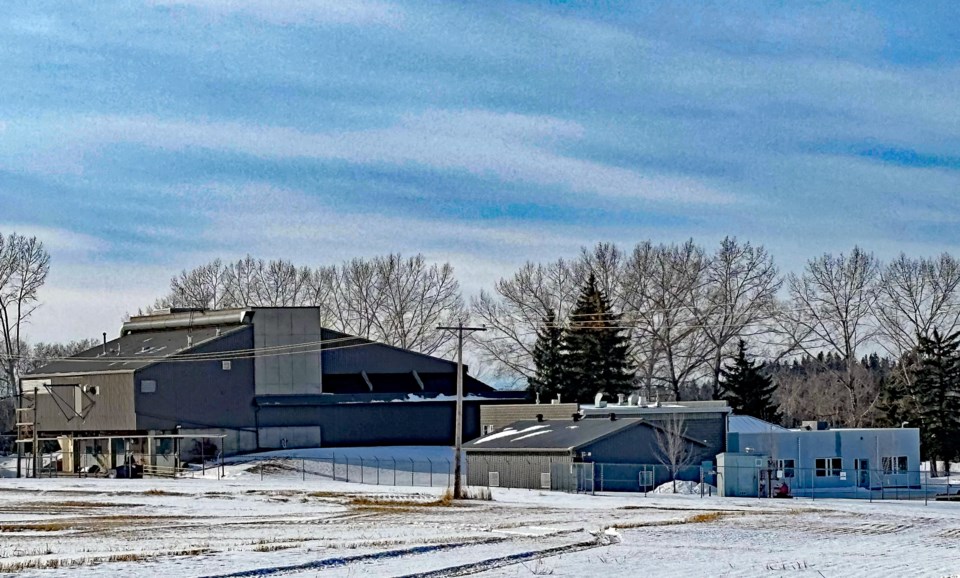INNISFAIL – The newly created drought committee of the Mountain View Regional Water Services Commission held its first meeting in Innisfail last week and members finally had a chance to meet a senior provincial official to discuss the Government of Alberta’s plan to handle this year’s expected drought.
And there is relief going forward for the commission that the province has no current plans to lay down the “big hammer” when it comes to water restrictions.
“That’s the last thing they (province) want to do is come down with a with that big hammer,” said Lance Colby, board chair of the commission, which is expecting sharing agreements with water licence holders to begin late this month.
The commission is the licence holder for the communities of Innisfail, Olds, Bowden, Didsbury, Carstairs and Crossfield.
“The (provincial) government wants it to be a collective collaborative agreement between the communities to get through this drought emergency,” said Colby.
The drought committee, along with a technical committee, was created by the commission following an announcement in early January from Rebecca Schulz, provincial minister of Alberta Environment and Protected Areas, that current significant drought conditions caused by last summer’s low rainfall and high temperatures could get worse later this year.
Schulz then announced on Jan. 31 that drought talks will start with water licence holders, including municipalities, to secure “significant and timely reductions” in water use.
On Feb. 5, members of the new drought committee gathered in Innisfail to meet Todd Aasen, approvals manager for the ministry of Environment and Protected Areas.
The committee wanted to hear first-hand from a senior provincial government official more details from Schulz’s broad but concerning drought statements, which included her plan being the “largest water-sharing negotiation to have ever occurred in Alberta’s history.”
Colby said there was discussion about the water basins, and how low the reservoirs have become, notably the Old Man and Bow river systems.
“The Red Deer River is down but not it's not as bad. The Bow is the one they're concerned about; the Bow and the Old Man (rivers) more so than the Red Deer,” he said. “But we do need spring runoff. We will have to see what that and the rains will be like.
“If we get like a big dump of snow in the mountains and rain, this might be just like last year, It might not impact us that bad,” added Colby. “But if we don't get it we'll know by the end of March into the end of April as to what's going to happen.”
He said the commission will be looking at making decisions in April or May.
“That will be when they are looking really serious as to what needs to be done, and then they’ll have to decide from then to August whether we have to declare an emergency or not,” said Colby.
As for Aasen’s presentation and ability to connect and provide answers to committee members, Colby said there was overall satisfaction.
“I thought it was always informative, so we could we could see and understand more of what they're looking at,” said Colby. “It was more of an overall view of what the government can and can't do, and the different levels of steps that can be taken.
“Everybody was pleased with the presentation, and we're glad that we did hear from the government and get to know what their position is and understand what their concerns are, and just how it will be addressed.”
Following Aasen’s presentation there was a review of water survey results.
The committee then agreed to forward the information to the technical committee to refine the material to show the basic areas of water use in the six commission-member communities.
The report will be due in the early part of March.
The next drought committee meeting is expected to be held in the first week of March.
Meanwhile in Innisfail, Todd Becker, the town’s chief administrative officer, noted the drought mitigation process is in its early stages and the town is still gathering information for a drought plan.
“I think there was confusion on the communication side of the different events going on with different engagements, so we’re just catching up. I think we're trying to learn where the (provincial) government wishes to go,” said Becker, who recently returned from a vacation. “We just need to be a participant at this point.
“It'll certainly drive into council. They'll have some considerations in the future if they want to apply any additional measures in relation to water conservation,” added Becker. “But right now, we're just learning to get to that point.”



